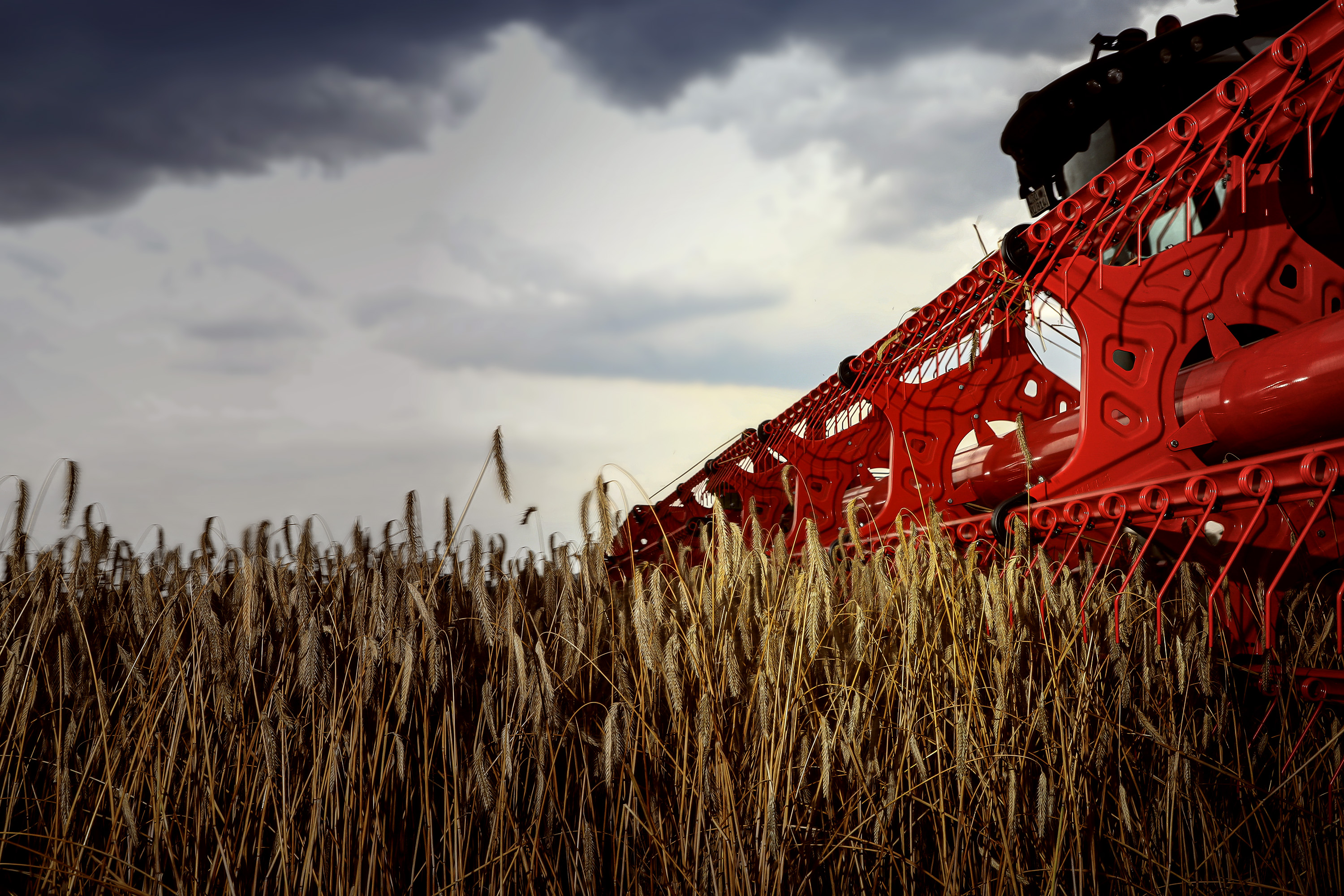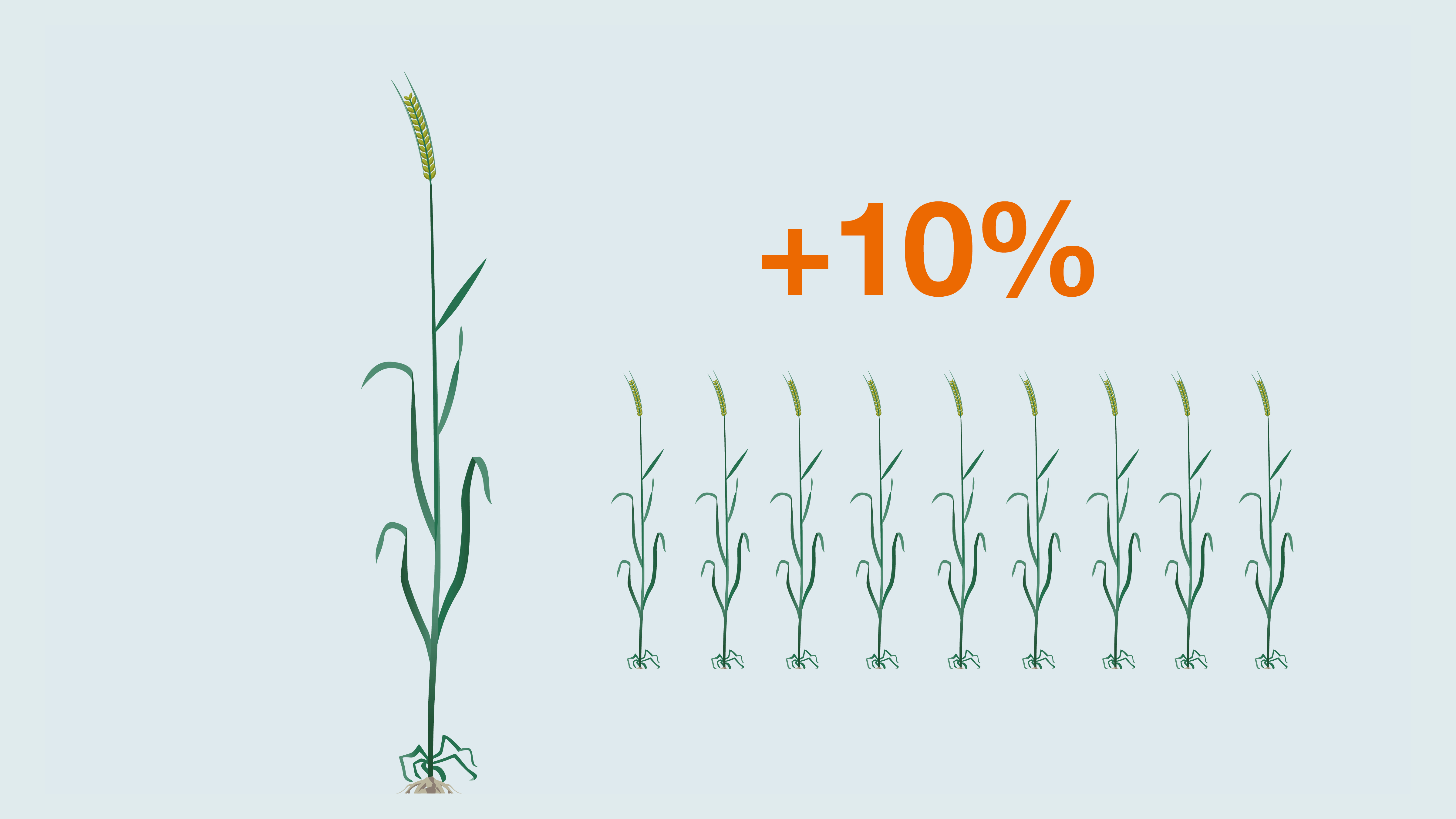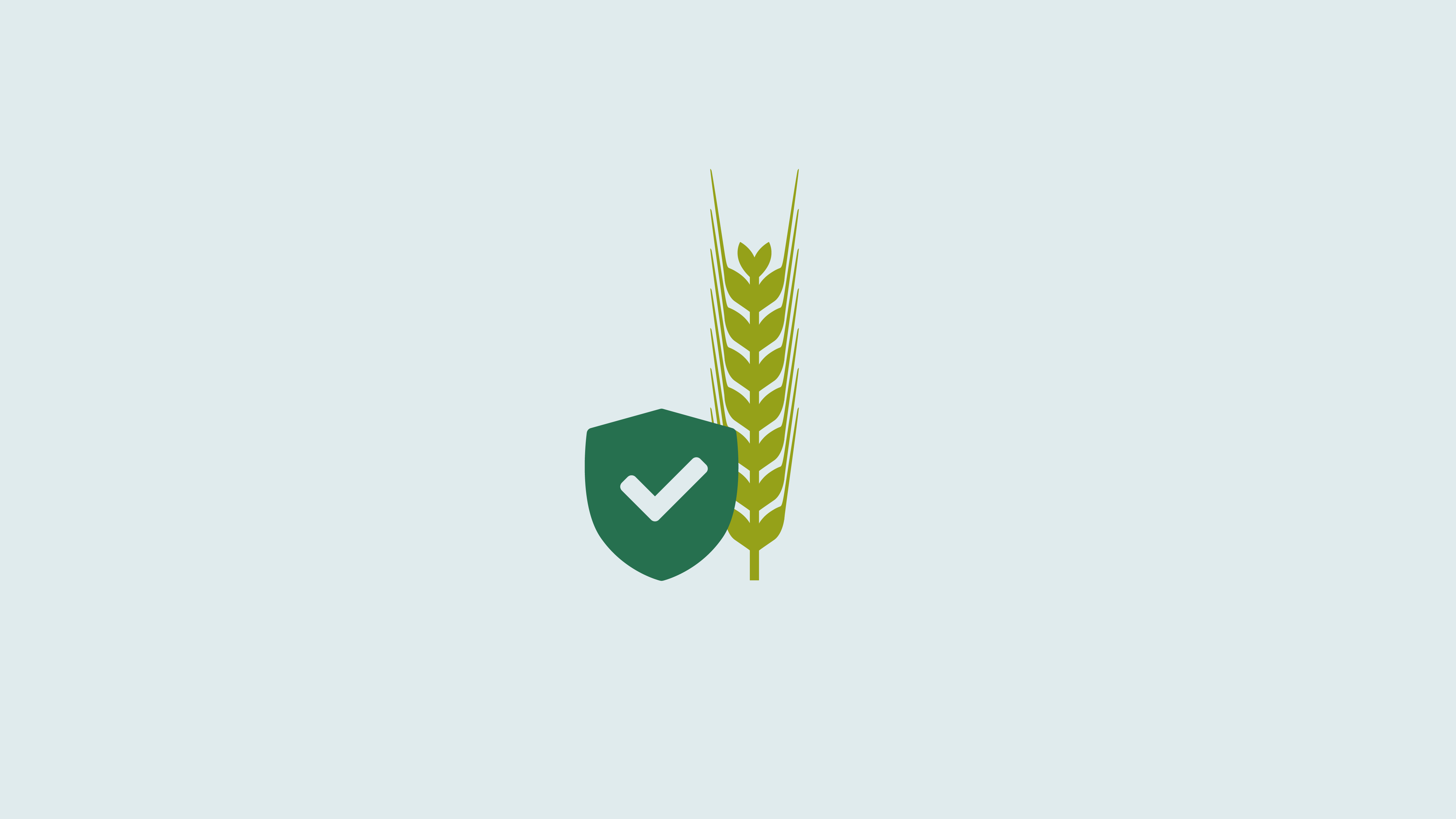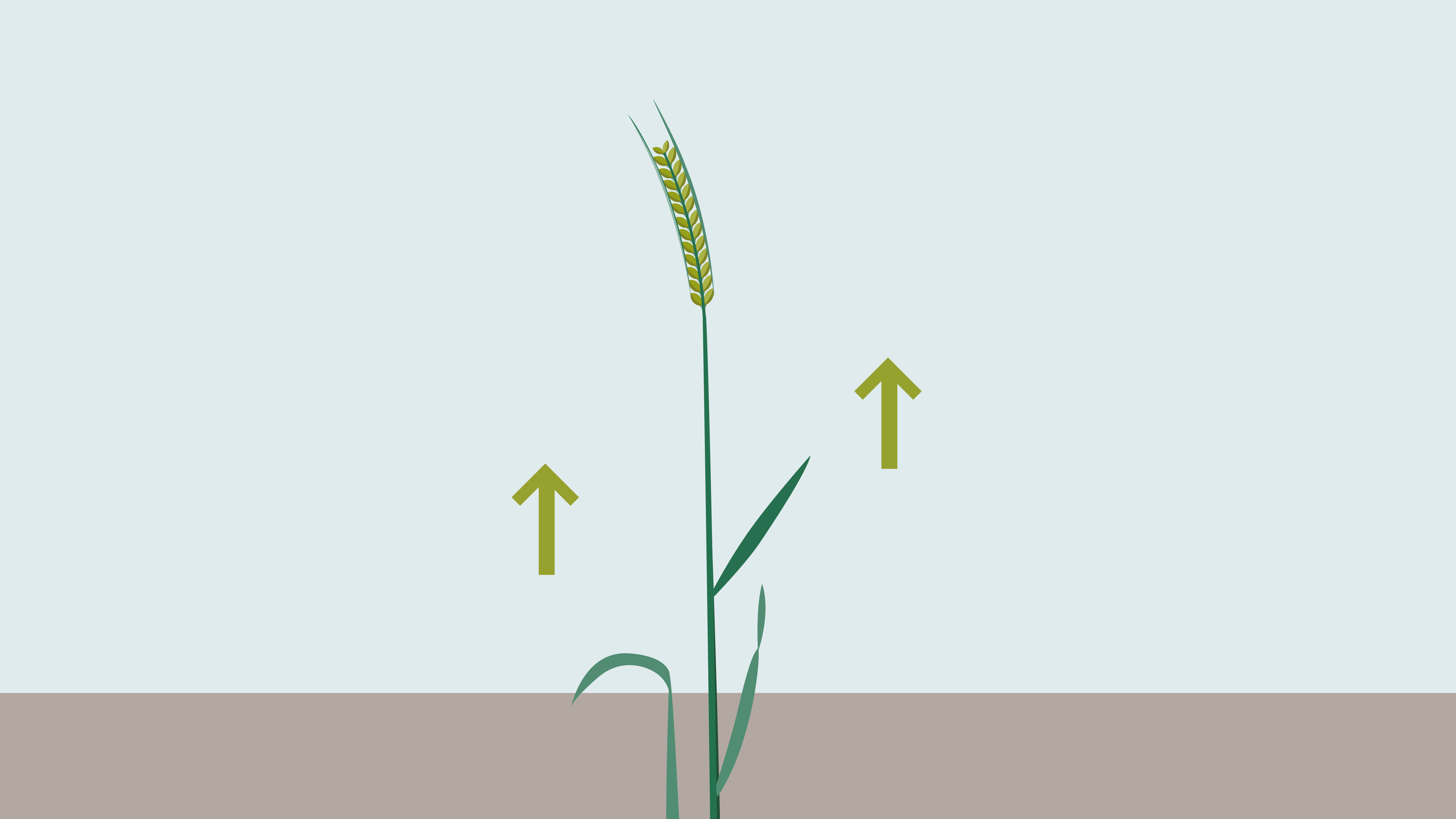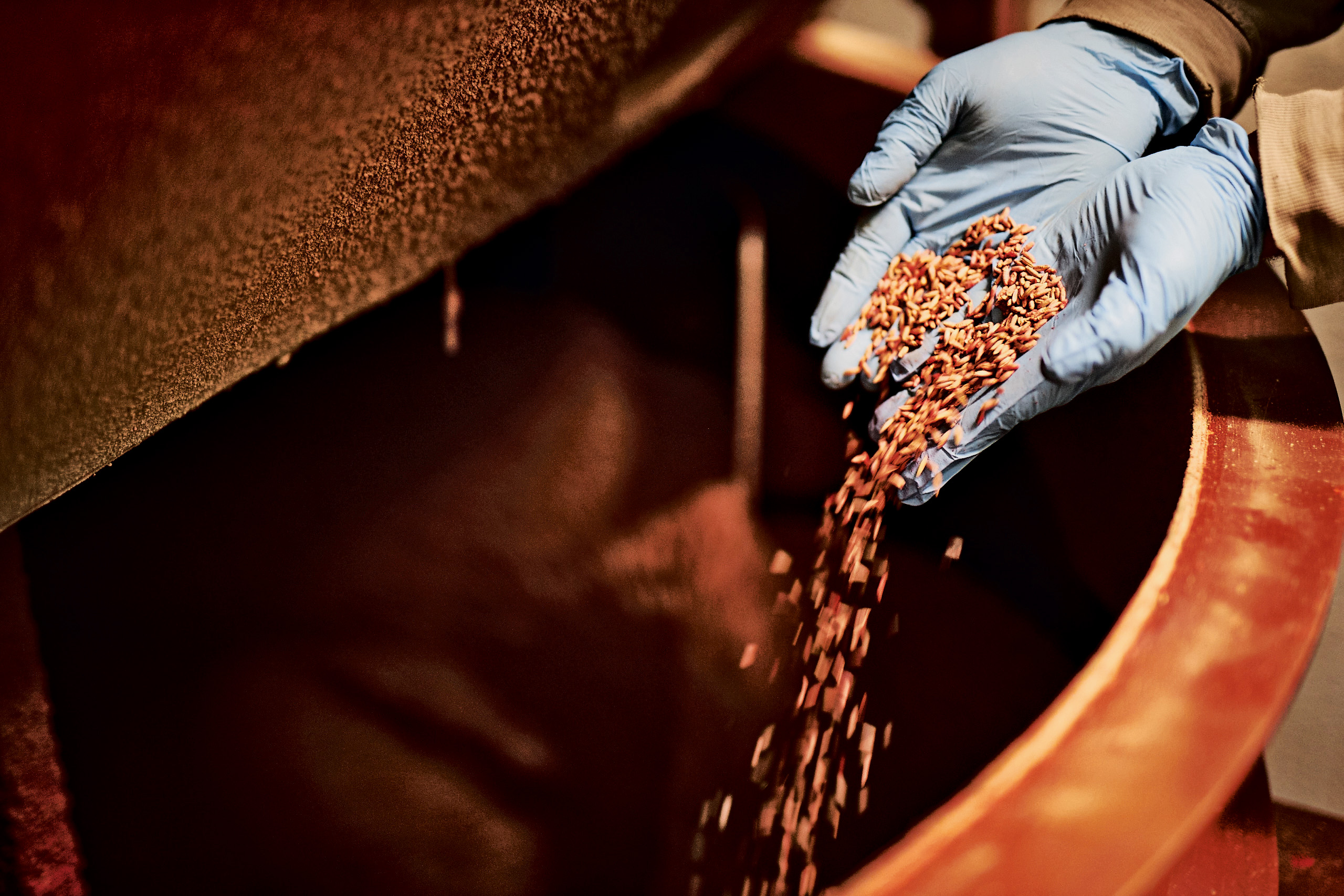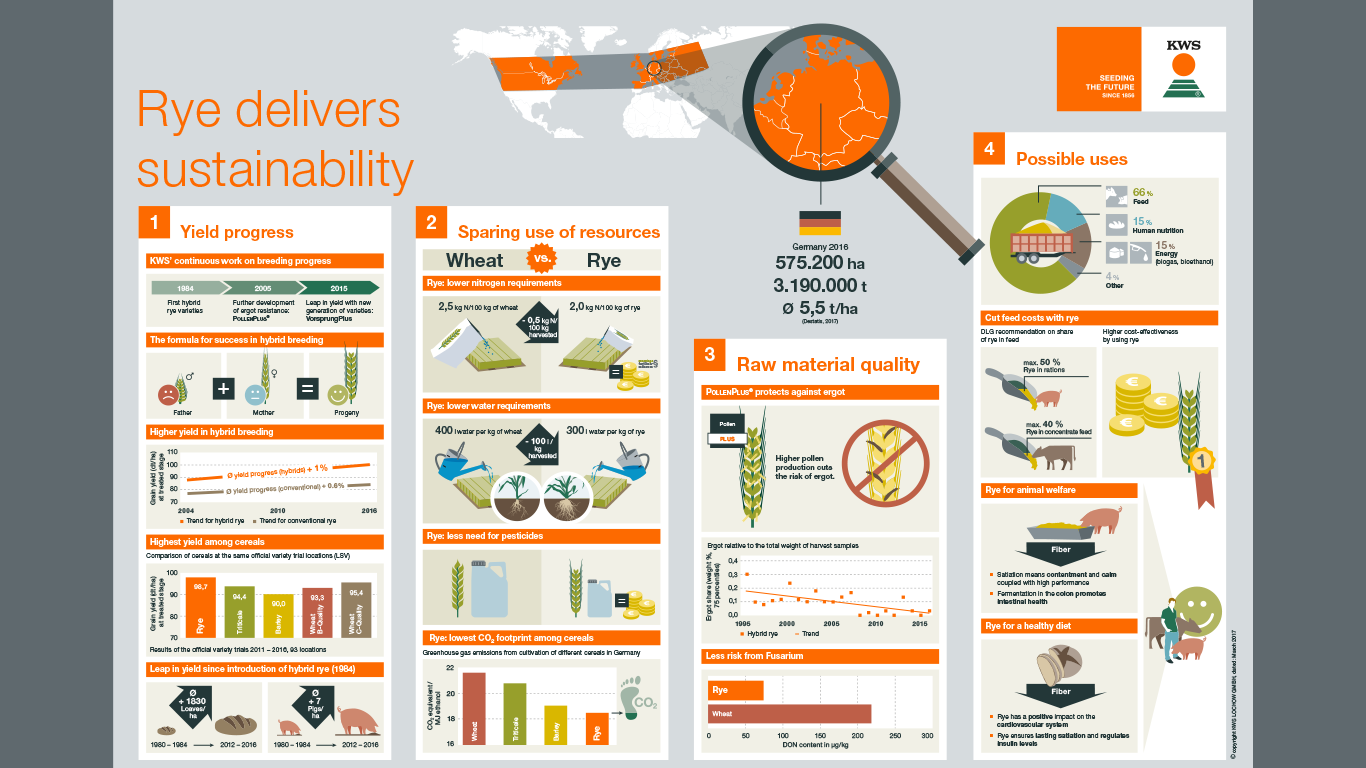Around the world – the #RYEVOLUTION 2.0 begins!
Our farmers around the world grow KWS' hybrid rye – and show what great successes are possible with this robust crop. It meets today's and tomorrow's requirements for a modern, high-yielding crop and has the best properties for sustainable and healthy nutrition for people and animals. On our around-the-world tour, we visit our farmers and want to know more: What are the advantages, strengths and reasons for growing rye? Let us convince you too, with real, first-hand experiences!
The #RYEVOLUTION 2.0 is taking off – take off with us!
Ryevolution unites Rye, Evolution and Revolution. What do the words stand for?
Rye
Rye has excellent yield potential.
Evolution
Rye shows high yield progress in hybrid breeding.
Revolution
Rye is the best solution for current and future agricultural challenges.
Hybrid rye could be
used up to
Rye needs lower nitrogen
requirements
Hybrid rye increased
grain yield up to
Rye has lower water
requirements
Rye has the lowest
Hybrid rye saves
The four pillars of hybrid rye for greater sustainability
Plant breeding as a key technology
As one of the leading seed specialists, KWS and its diverse portfolio of crops is contributing to making agriculture sustainable but also economically viable. Not least, the key message of “Sustainability begins with seeds” has been setting the tone for KWS since 1856.
Within this future-oriented portfolio, KWS hybrid rye varieties play an important role.
With its convincing properties – its health, yield stability, drought tolerance and nutrient efficiency – hybrid rye is already supporting the climate-related sustainability goals formulated by the United Nations. On a European level, the implementation of legislative requirements, such as those of the European Union’s “Green Deal” and the “Farm-to-Fork” strategy, poses important challenges for the entire agricultural sector – including beyond European borders. KWS's ongoing work on developing innovative seed varieties like KWS hybrid rye makes an important contribution towards achieving the specific targets and figures set out by policymakers.
Around the World: with farmer Henning Renk, Germany
On his conventional farm in Soltau, farmer Henning Renk and his parents rear dairy cattle and pigs. In our farmer story, he tells us about the role played by their cultivation of KWS hybrid rye and the advantages he believes it brings in terms of sustainable farming.
For me, agricultural sustainability means that what I do makes the future better. With rye cultivation we consume less water and use less fertilizer, yet still get high yields.
Hybrid rye – an added-value feed component
Beneficial for the immune system
New findings on feed value means rye is also interesting for pig fodder. Rye contains a lot of fiber and fructans, which are converted in the pig's colon into organic acids such as butyrate. These acids have a positive effect on intestinal health and intestinal flora. This is good for the immune system, because its function is determined by the microbial composition of the intestinal flora. Butyrate also contributes to salmonella reduction and lowers the boar taint caused by skatole. An extensive field trial confirmed these results.
Rye promotes animal welfare
Rye promotes animal welfare, because the high fiber content mans pigs feel satiated for a longer time. The blood sugar level remains stable, well-fed pigs are more satisfied and more relaxed – and what´s more, farmers note consistently high performance. In addition, fiber is good for the gastric mucosa, which help to prevent stomach ulcers.
Not afraid of ergot
Farmers used to be afraid to use rye for feeding, because of the ergot toxin, so rye was used only in small amounts. However, the latest breeds of KWS with the PollenPlus® breeding system are only slightly susceptible to ergot. They produce more pollen pollinating the stigma, so the risk of fungi settlement is reduced.
Hybrid rye: A strong crop, with strong characteristics!
Get to know the 360-degree advantages of rye – the 3D model of our KWS hybrid rye demonstrates the many advantages of a frequently underestimated crop! Its composition and structure make it a robust, sustainable and healthy grain that is able to stand up powerfully to the demands and challenges of the future.

